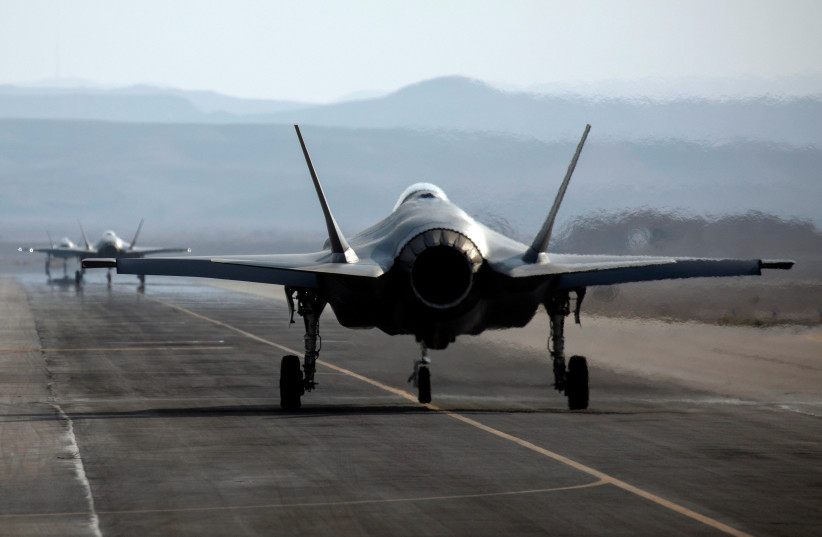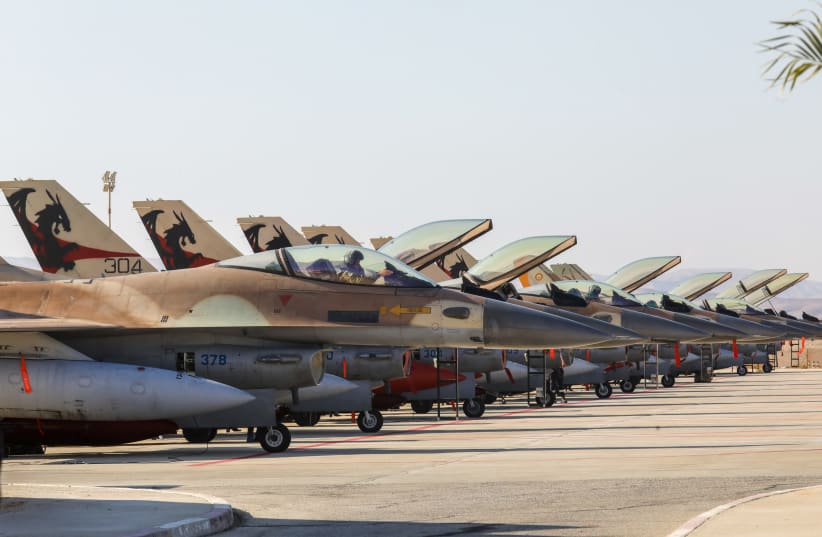Israel’s F-35 fighter jets and six F-15 fighter jets from the US Air Forces Central Command (AFCENT) took part in multi-day joint drills at the Nevatim air force base in southern Israel on Wednesday in what could be a signal to Iran in the ongoing nuclear standoff.
In an interview with the Jerusalem Post, F-35 Squadron 140 commander Lt. Col. “M” and Capt. “I,” who ran the drill from the Israeli side, both stayed away from getting too specific about the F-35s capabilities regarding any specific country but made it clear that they were ready and capable to strike anywhere that the IDF high command ordered them to go.
Further, the goal of the joint flights and simulated attacks was to train for hitting targets in “deep” enemy territory, often a euphemism for Iran and other countries who do not have immediate borders with Israel.
Air force potentially ready to attack Iran in "two to three years"
At a recent graduation ceremony of air force personnel, then-defense minister Benny Gantz said that the graduates would need to be ready to potentially attack Iran in "two to three years."


The Post was able to observe six Israeli F-35 aircraft taking off (the IDF will not reveal the full number of aircraft involved) and making initial maneuvers and four of the six American F-15 aircraft taking off along with their initial flight patterns.
A Gulfstream G-500/G-550 (“Nachshon”) was also involved to train for intelligence collection.
In mid-December, outgoing IDF chief-of-staff Aviv Kohavi said that Israeli air force jets attacking Syria in recent years have at times faced 30-40 surface-to-air missiles, or even in one instance, up to 70 such missiles, without losing a single aircraft.
Without discussing a specific operation, M emphasized the power of the F-35’s stealth capabilities and that he had personally confronted danger on various missions over the course of his career.
Neither M nor I could discuss the impact of Russia’s removal of the S-300 anti-aircraft system from Syria for use against Ukraine, but they did say that the IAF trains constantly for every scenario that its fighter jets might encounter.
M did not want to give a timeframe regarding when the 11 Israeli F-35 aircraft, which were grounded on December 25 from training flights to address a potential malfunction found in similar American jets, would be returned to full service.
The impression was that the review of the potential malfunction could be complex and take time. But M was clear that the remaining F-35s available, of which Israel has three squadrons (squadrons often vary from 10 to 25 aircraft), were plenty, along with other Israeli fighter aircraft to accomplish any mission that would need to be assigned.
(The full interview and coverage of the Jerusalem Post visit will run in next week's newspaper.)
